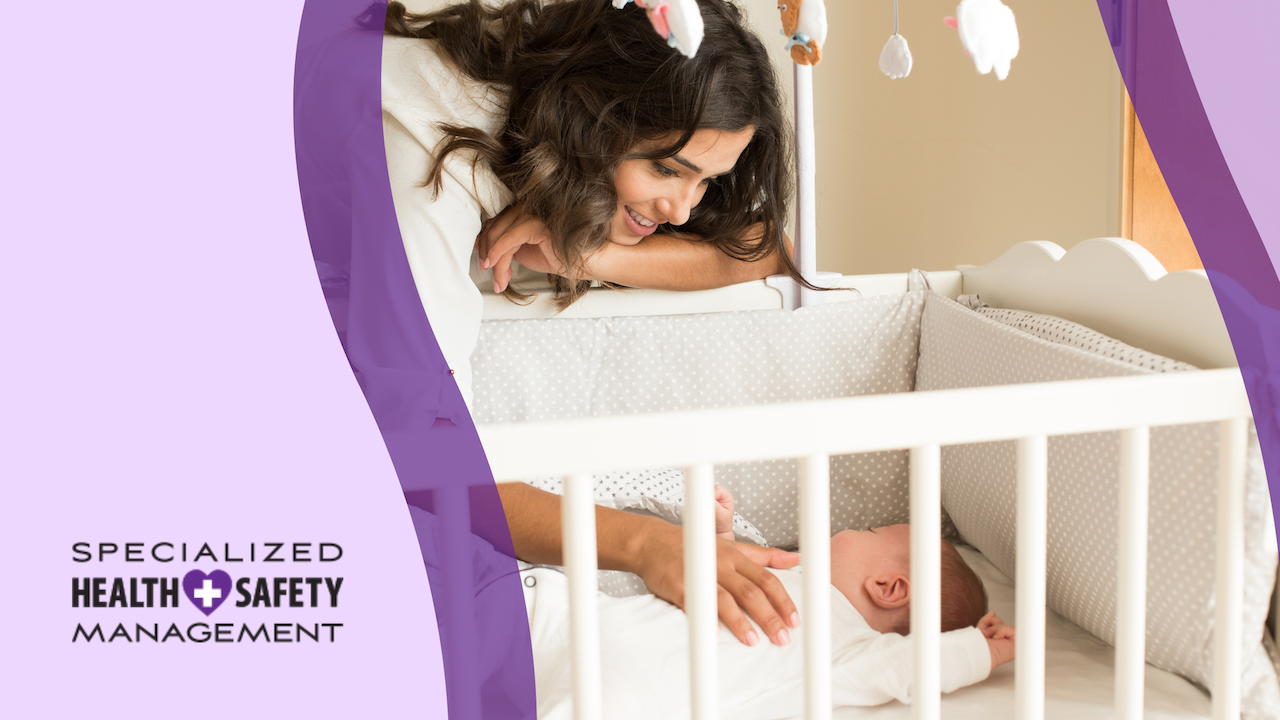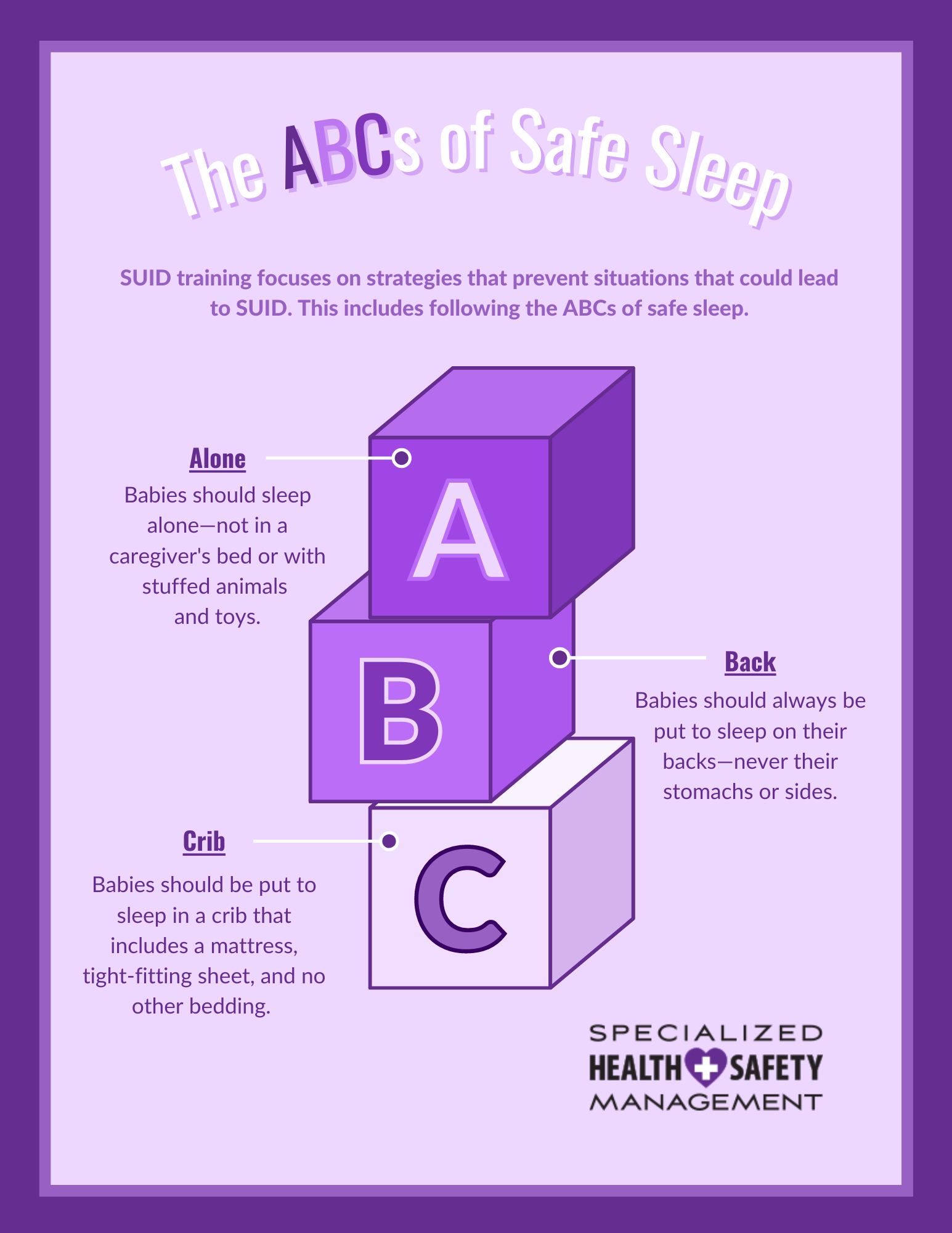
There are plenty of training courses that teach CPR or first aid, but there are other classes that can provide instruction for additional life-saving skills. SUID/AHT training is one such course that can be instrumental in saving the lives of infants and young children.
If you’re a parent or childcare professional, or if you’re looking to enhance an already existing CPR certification, consider signing up for a SUID/AHT course.
What is SUID?
SUID stands for “sudden unexpected infant death.” According to the National Institutes of Health (NIH), SUID is defined as “the death of an infant younger than 1 year of age that occurs suddenly and unexpectedly.”
Several common causes of SUID have been identified.
Blocked Airway
In cases of a blocked airway, air is not able to reach the lungs. This can occur due to suffocation or when a foreign object is ingested, leading to choking and cutting off the airway.
Infection
Viral and bacterial infections can lead to breathing difficulties in babies and infants.
Entrapment
This occurs when a baby is stuck between two objects, such as the wall and a mattress or piece of furniture, leading to difficulty breathing.
Medical Conditions
Health conditions can contribute to SUID. Metabolic diseases can disrupt the function of typical processes in the body, resulting in difficulty breathing. Cardiac arrhythmias that lead to elevated or slowed heart rates can also cause breathing trouble.
SIDS
While the types of SUID listed above have clear causes, SIDS, or “sudden infant death syndrome,” is a category of SUID that includes cases with no known cause. These occurrences are classified as SIDS if no explanation can be found after a full investigation.
SUID Training
SUID training focuses on strategies that prevent situations that could lead to SUID from known causes. Many cases of SUID occur during sleep, so courses often teach safe sleep strategies to caregivers. This includes following the ABCs of safe sleep.

Alone
Babies should be on their own when sleeping. It’s safest to sleep in their own space instead of sharing the caregiver’s bed, and this space should also be free of objects like toys and stuffed animals.
Back
Babies should be put to sleep on their backs to prevent health issues and potentially life-threatening situations. Caregivers should not put babies on their stomachs or sides when putting them to bed.
Crib
Cribs are great sleep spaces for babies. To make the crib as safe as possible, it should have a flat and firm surface, like a mattress. A tight, fitted sheet should be put on the mattress, and there should be no other bedding, blankets, or pillows present.
What is AHT?
AHT stands for “abusive head trauma.” This is a type of physical child abuse that injures the brain, head, or neck. It typically occurs when a caregiver or parent violently shakes or hits a baby against something.
AHT has a negative long-term impact on the health of the victim, which can manifest as physical disabilities, vision problems, hearing loss, and developmental delays. It can also cause death.
AHT Training
AHT training aims to prevent abusive head trauma by providing parents and caregivers with strategies for successful caregiving. These strategies aim to prevent the situations that lead to AHT from occurring in the first place.
Soothing Techniques
Trying different soothing techniques can help reduce crying and allow the caregiver to feel less overwhelmed. Methods to try include:
- Gentle rocking
- Singing
- Walking the baby in a stroller
- Providing a pacifier
Perspective
Knowing what to expect in the baby’s first year of life can help new parents and caregivers get a better perspective. Part of this is understanding that babies typically cry the most in their first few months and less as they get older.
Taking Breaks
Another important part of preventing AHT is knowing when to take a break as a caregiver. It’s essential for caregivers to recognize when they’re feeling upset or overwhelmed. When this occurs, they should set the baby in a safe place or switch places with another caregiver and take some space to calm down. Calling a friend, family member, or healthcare provider for advice is another useful strategy when feeling overwhelmed.
SUID/AHT Training With Specialized Health and Safety
SUID/AHT training is beneficial for caregivers, parents, and individuals in the childcare industry. Learning strategies to prevent dangerous situations from occurring is the best way to prevent SUID and AHT.
Specialized Health and Safety offers a combined SUID/AHT course that teaches participants how to create a safe sleep environment, understand the risk factors and symptoms of AHT, and learn strategies to implement when feeling stressed or angry.
Get in touch today to find out more and schedule a date for a training session.

